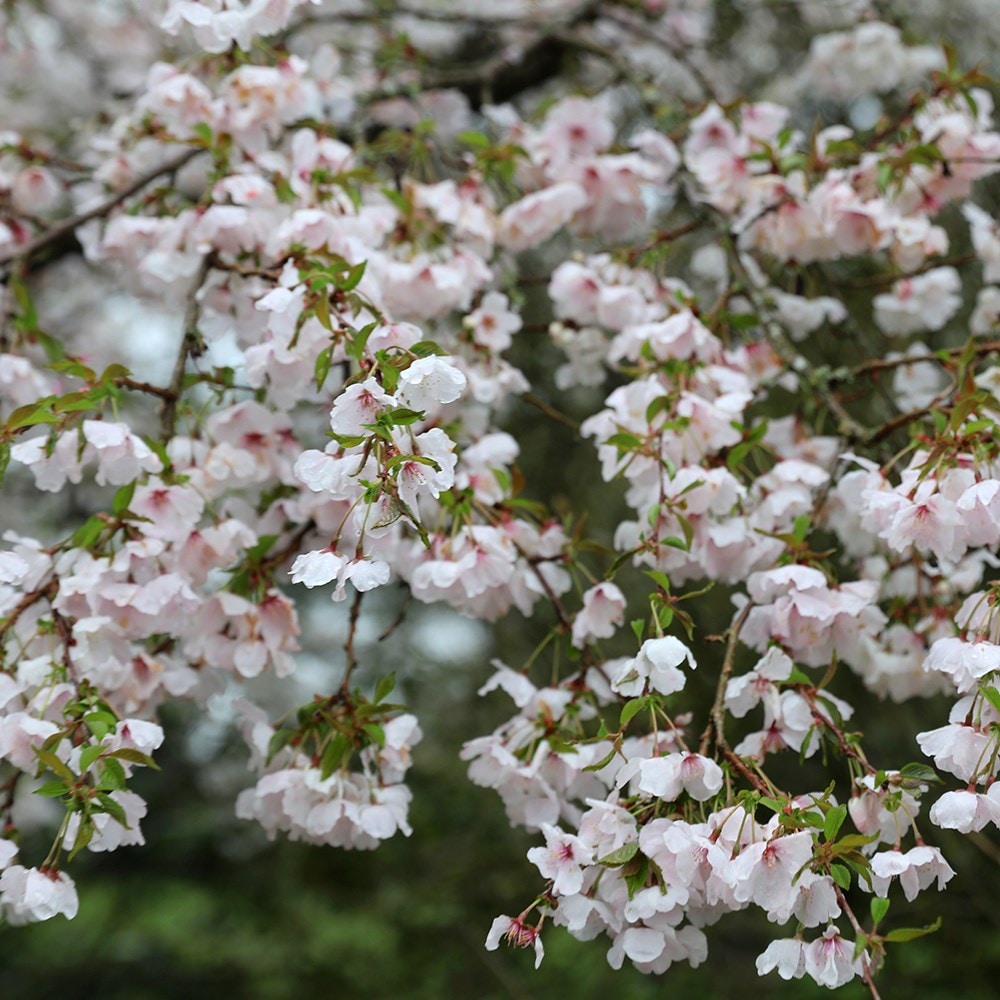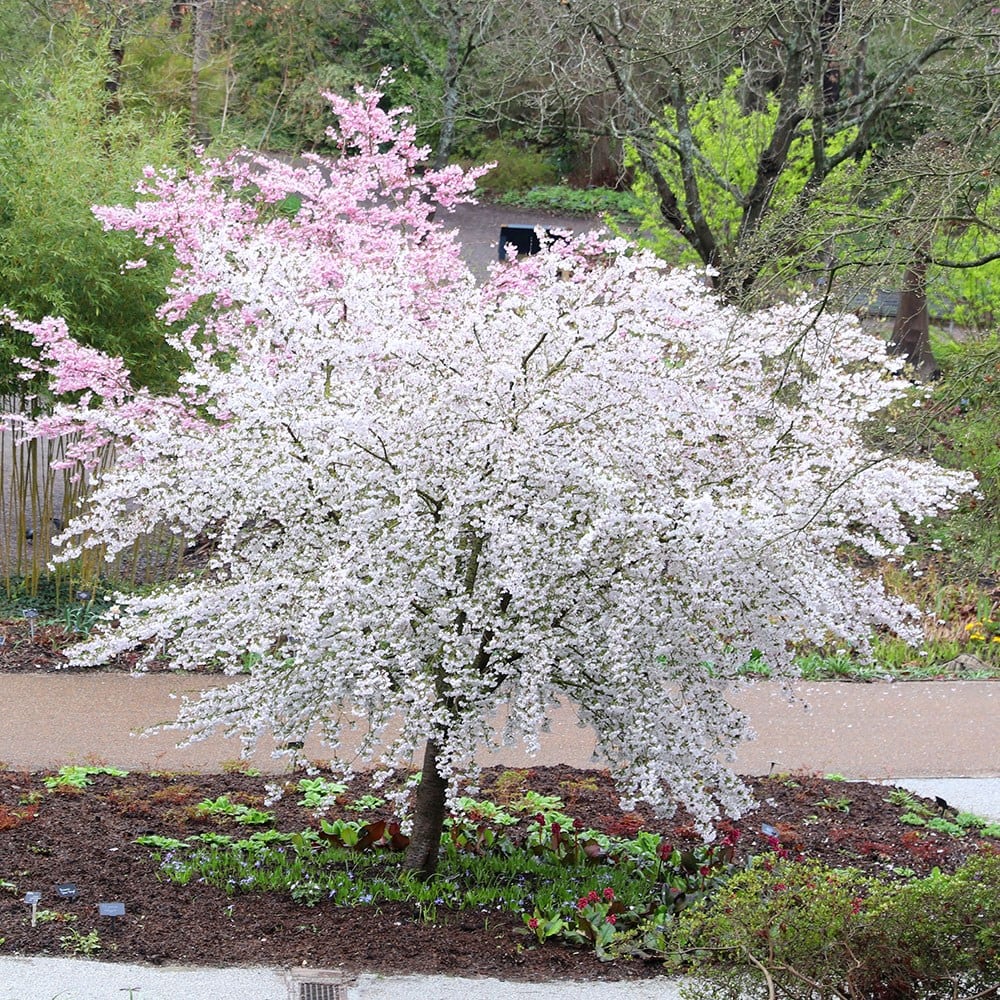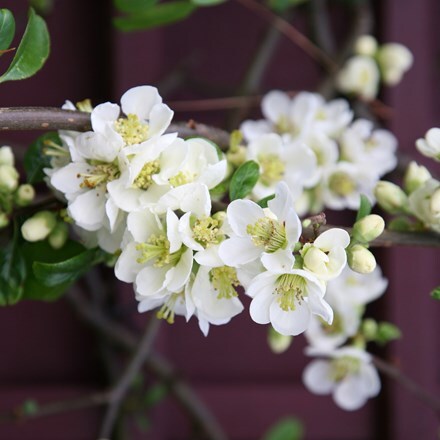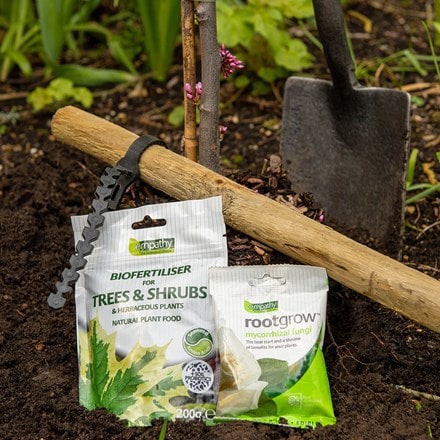Eventual height & spread
Prunus 'The Bride'
flowering cherry blossom tree ( syn. Prunus incisa 'The Bride' )
- 11.5 litre pot | 1.0 - 1.5m tall
- £124.99
- In stock (shipped within 3-5 working days)
- 12 litre pot | 1.2 - 1.5m tall
- £164.99
- In stock (shipped within 3-5 working days)
- bare root | 1.2m tall
- £39.99
- available to order from autumn 2024
- 9 litre pot | 1.2 - 1.5m tall
- £69.99
- available to order from late spring
Delivery options
- Standard £7.95
- Position: full sun
- Soil: moderately fertile, moist, well-drained soil
- Rate of growth: average
- Flowering period: April
- Hardiness: fully hardy
- Garden care:When planting your ornamental cherry, prepare a hole up to three times the diameter of its root system. Fork over the base of the pit in readiness, incorporating plenty of organic matter into the backfill and planting hole. Avoiding frozen and waterlogged soil, trees should be planted out as they arrive. If you've ordered a bare root tree, soak the roots in a bucket of water for half an hour prior to planting, or if this is not possible, they can be heeled in temporarily, covering their roots with soil, or potted up. Choose a sheltered spot to protect emerging blossom. Lightly prune in summer to reduce the risk of silver leaf and bacterial canker, to retain an open ‘goblet' shape and remove any damaged, diseased or broken branches.
The flowers of this small, rounded tree are exquisite, and create a wonderful display in mid-spring. Larger than many of the other ornamental cherries, they have pure white petals, which surround a contrasting cluster of distinctive red anthers. The dense, twiggy crown of this small tree has been grafted on to the upright stem of the rootstock at a height of 45cm, which will limit the eventual height. Ideal for growing in a container, or will make a fine specimen for a lawn or spring border where it can be underplanted with bulbs. In autumn, the normally green leaves turn rich autumn shades before they drop.




